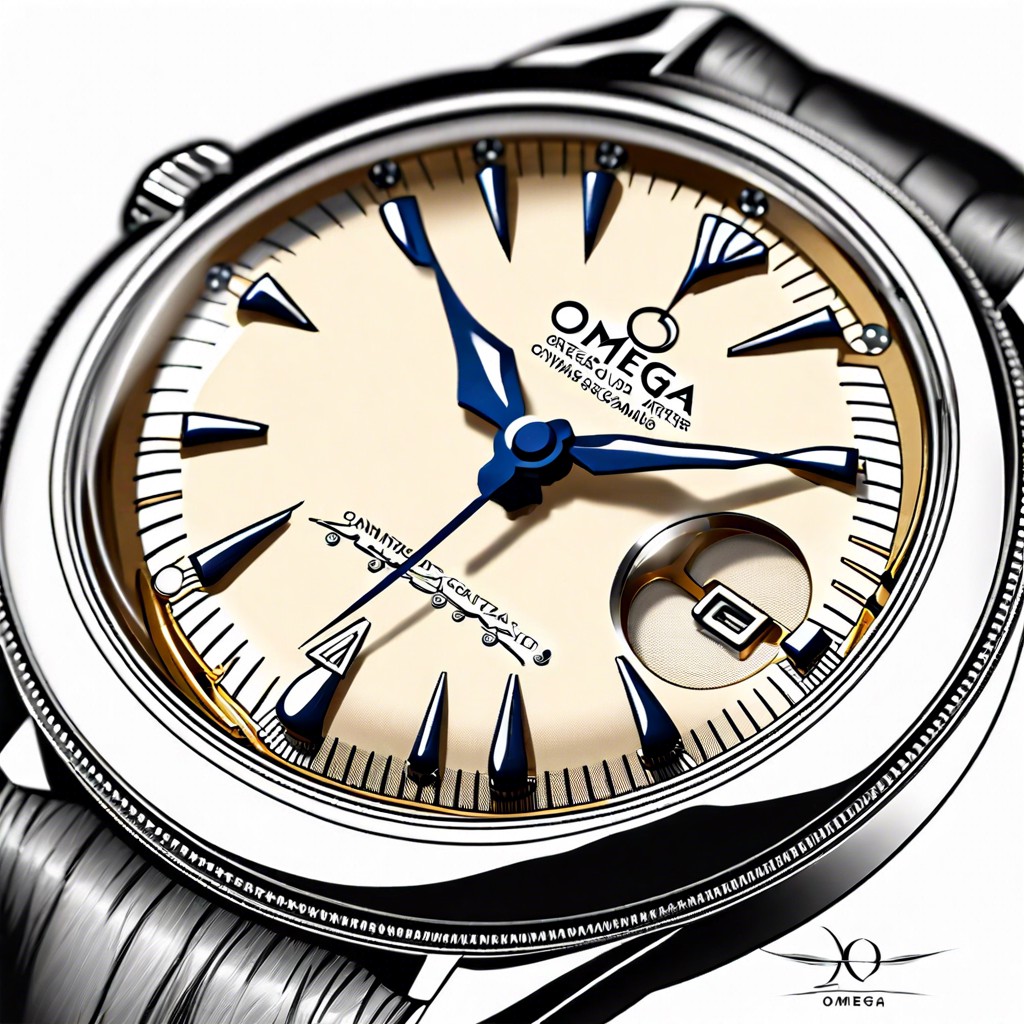Last updated on
This article examines the allure of vintage guitars, detailing their significance and what makes them highly sought after by musicians and collectors alike.
Key takeaways:
- Vintage guitars serve as a testament to the evolution of sound and craftsmanship.
- Age, condition, rarity, provenance, and market trends influence a vintage guitar’s value.
- Iconic models like the Fender Stratocaster, Gibson Les Paul, Martin D-28, and Rickenbacker 360 shaped music history.
- Buying vintage guitars can be done through physical stores or online shops, each with its own advantages and considerations.
- Famous musicians like Eric Clapton, Jimi Hendrix, and Bob Dylan exemplify the importance of vintage guitars in shaping musical styles and eras.
Historical Significance of Vintage Guitars
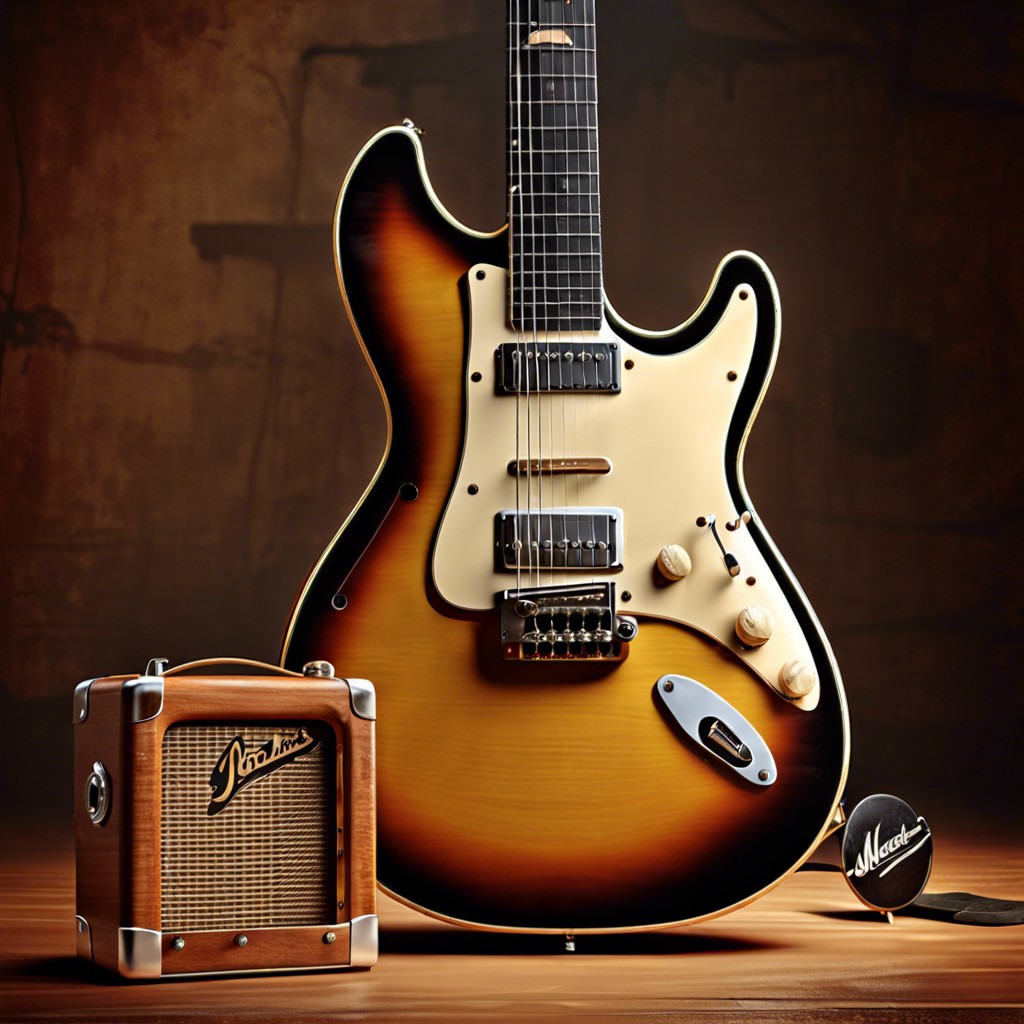
Vintage guitars carry the echoes of music history, serving as a testament to the evolution of sound and instrument craftsmanship. Each piece tells the story of its era, from the woods used to the unique design features popular at the time.
These instruments were often crafted in limited quantities, making them highly sought after today. As technology and materials have evolved, the distinct auditory qualities of guitars from different periods have become more prized.
Furthermore, the techniques used in creating these guitars were often labor-intensive and detail-oriented, qualities that are sometimes lost in modern mass production. The intrinsic value of vintage guitars is deeply tied to their contribution to musical genres, influencing everything from rock and roll to blues and jazz.
Owning one is akin to possessing a piece of musical heritage, offering a direct link to the sounds and styles that shaped contemporary music.
Factors Affecting the Value of Vintage Guitars
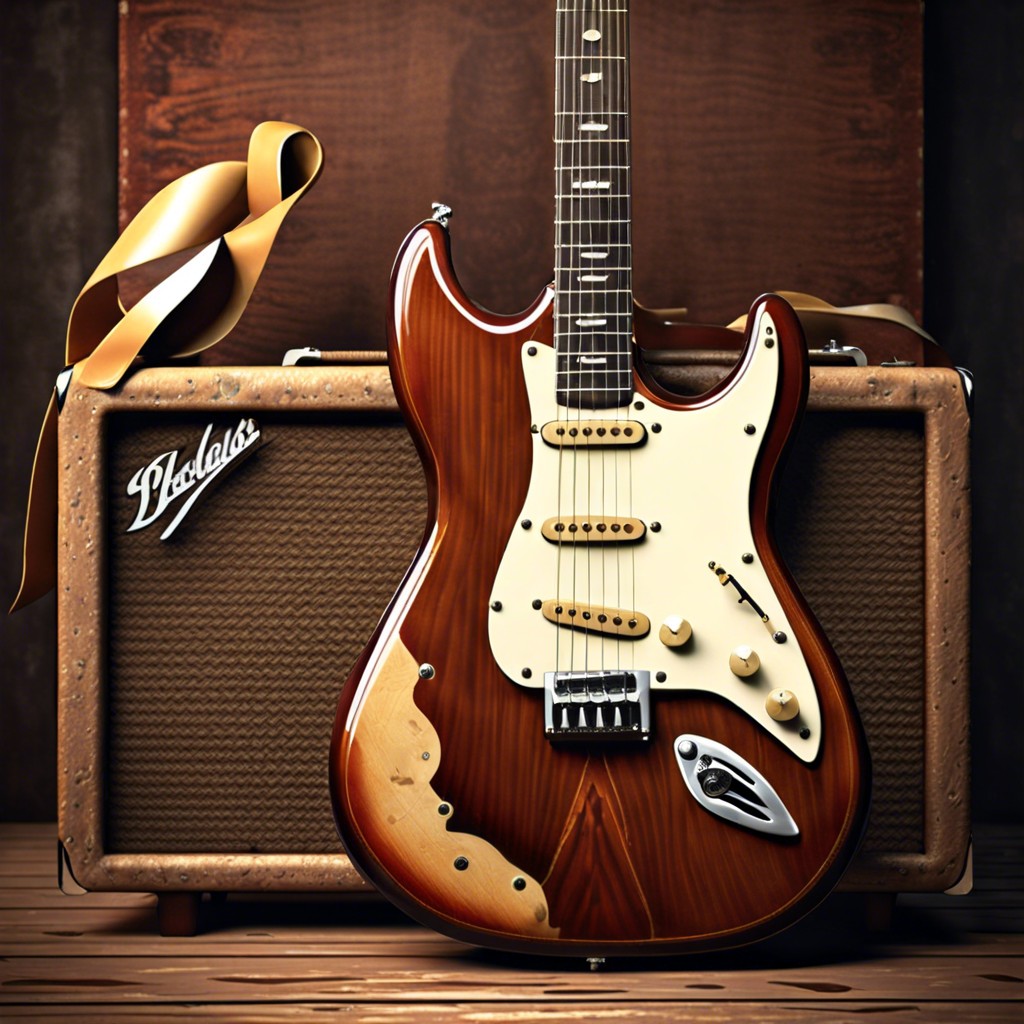
Several elements influence the monetary worth of vintage guitars, making each piece a study in history, craftsmanship, and market dynamics.
Age plays a crucial role; older guitars often fetch higher prices due to rarity and historical value. However, condition is equally important. A well-preserved guitar that maintains its original parts and finish usually commands a premium.
Rarity also elevates a guitar’s value. Limited edition models, or those from defunct brands, often have a smaller supply which can drive up demand among collectors.
Provenance can add an extra layer of value, especially if the instrument was owned or played by a notable musician. This connection to famous artists can imbue a guitar with a sentimental value that transcends its physical attributes.
Lastly, market trends should not be overlooked. The popularity of certain music genres or artists can spur interest in related vintage guitar models.
Iconic Vintage Guitar Models
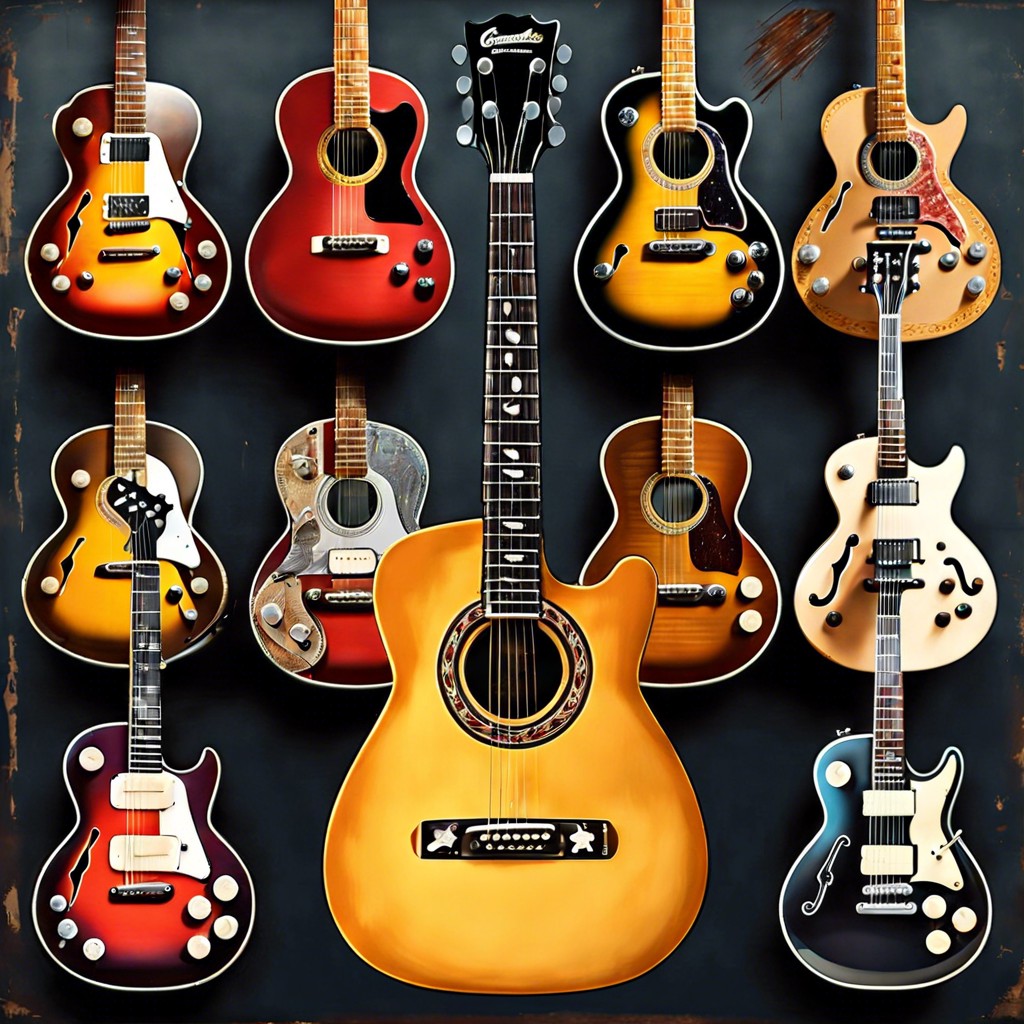
The Fender Stratocaster, launched in 1954, found fame with its contoured body and three pickups, offering a range of sounds that became synonymous with rock and blues artists like Jimi Hendrix and Eric Clapton. Its design revolutionized guitar playability and aesthetics, still cherished in today’s music scene.
Gibson Les Paul, first produced in 1952, is celebrated for its rich, warm tones derived from its solid mahogany body and humbucker pickups. Legends like Jimmy Page and Slash favored this guitar, influencing generations of musicians.
The Martin D-28, revered in the acoustic world, has been a top choice for folk and country musicians since 1931. Its powerful, deep sound and durability make it ideal for both vigorous strumming and delicate fingerpicking.
Rickenbacker 360, with its distinctive jangly sound, gained prominence in the 1960s. It was notably used by George Harrison of The Beatles, enhancing its status among rhythm guitarists and rock enthusiasts alike.
Each of these models holds a pivotal place in the history of music, embodying developments that shaped the sounds of their eras. Collectors and musicians alike treasure these instruments for their historical significance and unique sonic qualities.
How to Buy Vintage Guitars: Physical Stores Vs Online Shops
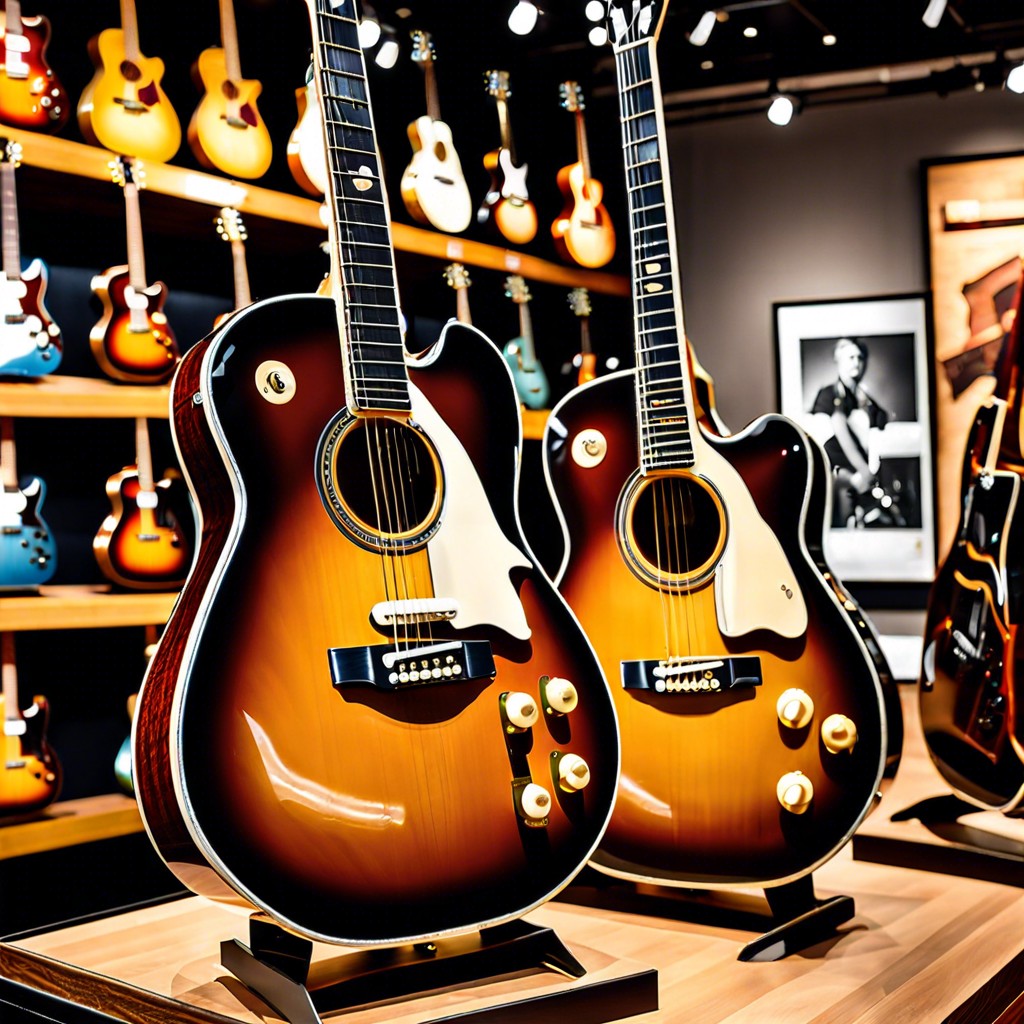
Purchasing a vintage guitar requires careful consideration. In physical stores, buyers can inspect each instrument’s condition firsthand, noting any wear or modifications. The ability to play the guitar, hearing its sound and feeling its neck under your fingers, adds a vital layer of personal connection. You can directly discuss its history and origin with the store owner, gaining insights that are not always available online.
Online shops, on the other hand, offer a wider selection of guitars, often including rare finds not available locally. Detailed photos and descriptions provide a comprehensive overview, and some sites even include sound clips. However, the inability to physically examine the guitar before purchase necessitates reliance on the accuracy and transparency of the seller. Additionally, buyers should consider shipping costs and policies, as these can affect the overall investment.
Both avenues have merit, but the choice often depends on personal preferences for hands-on evaluation versus broader selection and convenience.
Famous Musicians and Their Vintage Guitars
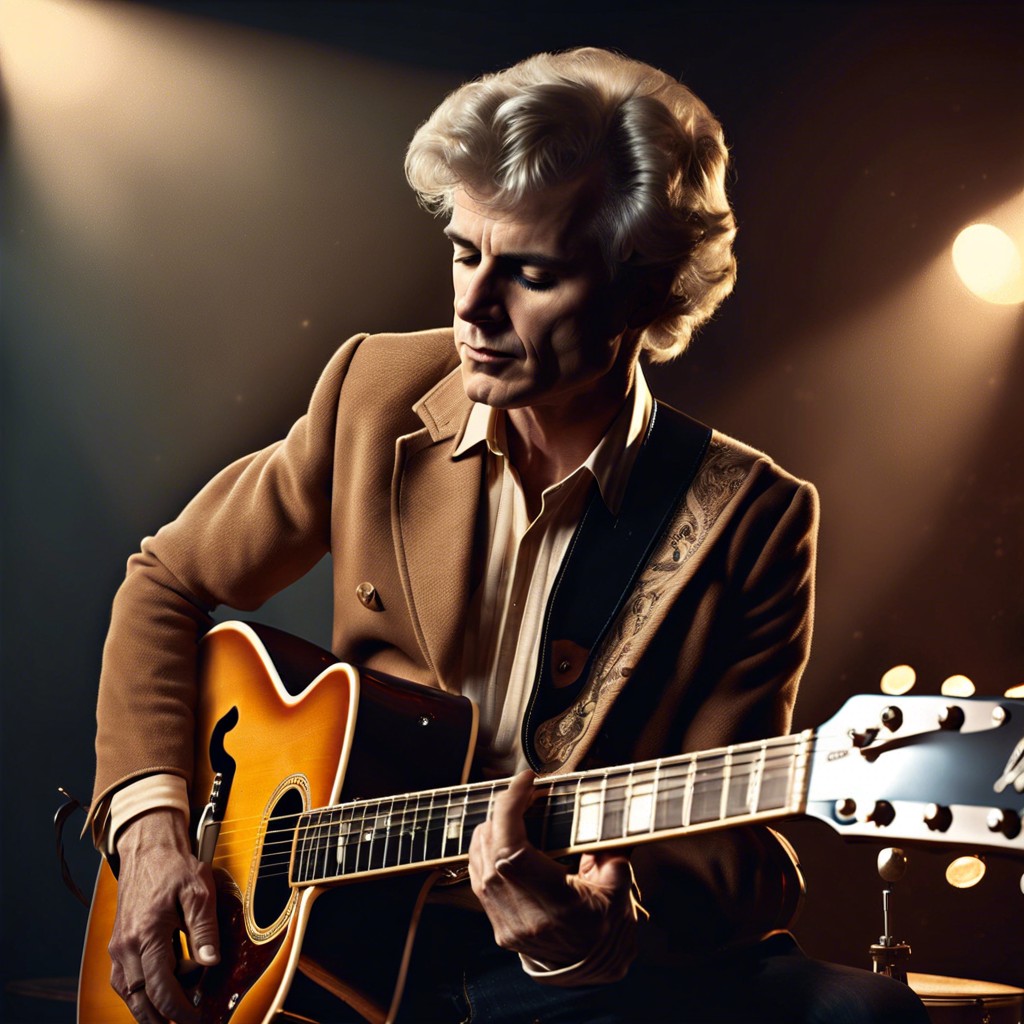
Eric Clapton’s 1964 Gibson ES-335 is as legendary as his music. It’s known for its warm, rich tone that graced many of his hits. Clapton’s choice underscores how specific guitar models became integral to an artist’s sound, impacting both their play style and musical output.
Jimi Hendrix famously set the stage on fire with his 1968 Fender Stratocaster at Woodstock. Beyond its dramatic finale, this guitar facilitated Hendrix’s innovative use of distortion and feedback, illustrating how a musician’s instrument can be pivotal in defining the era’s music landscape.
Bob Dylan’s switch from acoustic to electric guitar marked a pivotal shift in folk music. His 1964 Fender Stratocaster, played at the Newport Folk Festival, not only sparked controversy but also highlighted how vintage guitars were at the forefront of musical revolutions.
These examples showcase how vintage guitars not only carry a history of craftsmanship but also bear witness to music evolution. Each guitar tells a story of artistic endeavors and cultural shifts, encapsulating moments that define genres and eras.




